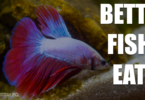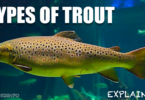Eretmochelys imbricata commonly known as Hawksbill Sea Turtle is the most fascinating creature of the aquatic world. The Hawksbill Sea Turtle is an ancient reptile that has been swimming in open waters for more than 100 million years, but the myriad challenges they currently face have brought them dangerously close to going extinct. The fascinating world of hawksbill sea turtles and the efforts being taken to conserve them will be covered in this article.
What Is the Taxonomic Classification of Hawksbill Turtles?
The hawksbill sea turtles are scientifically classified as:
- Kingdom: Animalia
- Phylum: Chordata
- Class: Reptilia
- Order: Testudines
- Family: Cheloniidae
- Genus: Eretmochelys
- Species: imbricata
What is the Distribution and Habitat of Hawksbill Sea Turtles?
The hawksbill sea turtle prefers the tropical and subtropical waters of the Caribbean, the Indo-Pacific area, the Gulf of Mexico, the Atlantic Ocean, the Pacific Ocean, and the western Indian Ocean. They live in various habitats such as seagrass coral reefs, beds, and rocky coasts. These places give them access to an abundance of food, and protection from rapacious predators, playing a significant role in keeping the diversity and vitality of these ecosystems.
What Is the Anatomy and Appearance of Hawksbill Sea Turtles?
The unique appearance of hawksbill sea turtles makes them easily recognizable species in the vast oceans. They have a flattened body shape and pointed beak that resembles a hawk’s bill, and exhibit a striking blend of shades of brown, green, and orange, that resembles a mosaic. They are extremely agile in the water thanks to flippers that have been modified for swimming.
The scutes on their shells overlap, creating a sturdy armor that offers protection from predators and environmental hazards. The shells of hawksbill sea turtles measure between 2 to 3 feet and can weigh around 100 to 150 pounds.
What Diet and Feeding Habitat Do Hawksbill Sea Turtles Prefer?
Hawksbill sea turtles are carnivorous species that feed mainly on sponges. They have narrow beaks that can reach easily into the services and remove sponges from coral reefs. By feeding on sponges, hawksbills prevent these organisms from overgrowing and choking the reef, allowing other species to thrive. They are also opportunistic feeders and feed on a variety of other marine invertebrates and algae when sponges are scarce, allowing them to survive in various marine environments.
What Is the Life Cycle and Reproduction Pattern of Hawksbill Sea Turtles?
The reproductive cycle of Hawksbill Sea turtles includes a nesting process that typically occurs every 2 to 4 years. A single nest can contain around 100 to 150 eggs, which are then covered with sand for protection The female hawksbills emerge from the ocean, crawl up the beach, and dig a hole with their flippers to lay their eggs. The hatchlings leave their nests after about two months, usually at night, and instinctively swim towards the ocean. These turtles reach sexual maturity between the ages of 20 to 40 years.
What Is the Status of Hawksbill Sea Turtles in Terms of Conservation?
The IUCN has classified Hawksbill Sea turtles as a Critically endangered species. This is because the population of Hawksbill Sea turtles has been declining significantly over the years due to a variety of threats such as habitat loss, illegal trading, climate change, pollution, or accidental bycatch. Conservation efforts such as strict regulations against hunting and trading, and the establishment of protected marine areas, can protect hawksbill sea turtles and their habitats effectively.
Hawksbill Sea Turtle Fact
Here are some fascinating facts about hawksbill sea turtles:
- Their shells have a mosaic-like pattern with colors ranging from brown and green to orange. Their shells can measure between 30 to 35 inches in length.
- Hawksbills are often associated with coral reefs and feed primarily on sponges.
- These turtles reach sexual maturity between 20 to 40 years.
- They nest every 2 to 4 years and lay around 100 to 150 eggs in a single nest.
Conclusion
Hawksbill sea turtles are not only a sign of beauty but are an indicator of the health and resilience of our oceans. Their striking appearance, diet, feeding habitat, and specialized reproductive behavior make them the most incredible species among all sea turtles. However, their critically endangered status is a reminder of the need for conservation efforts and precautionary measures to ensure their long-term survival.







